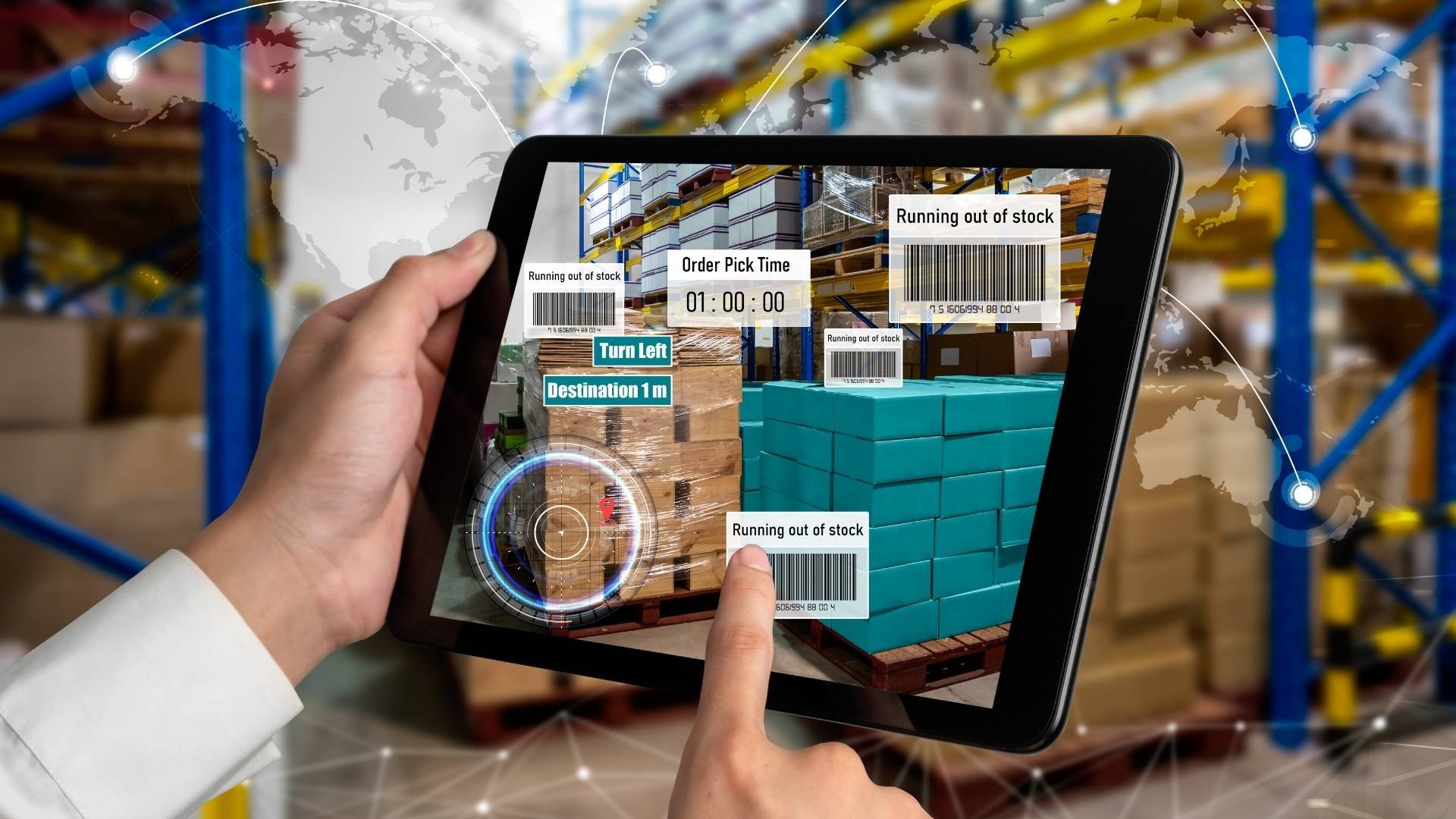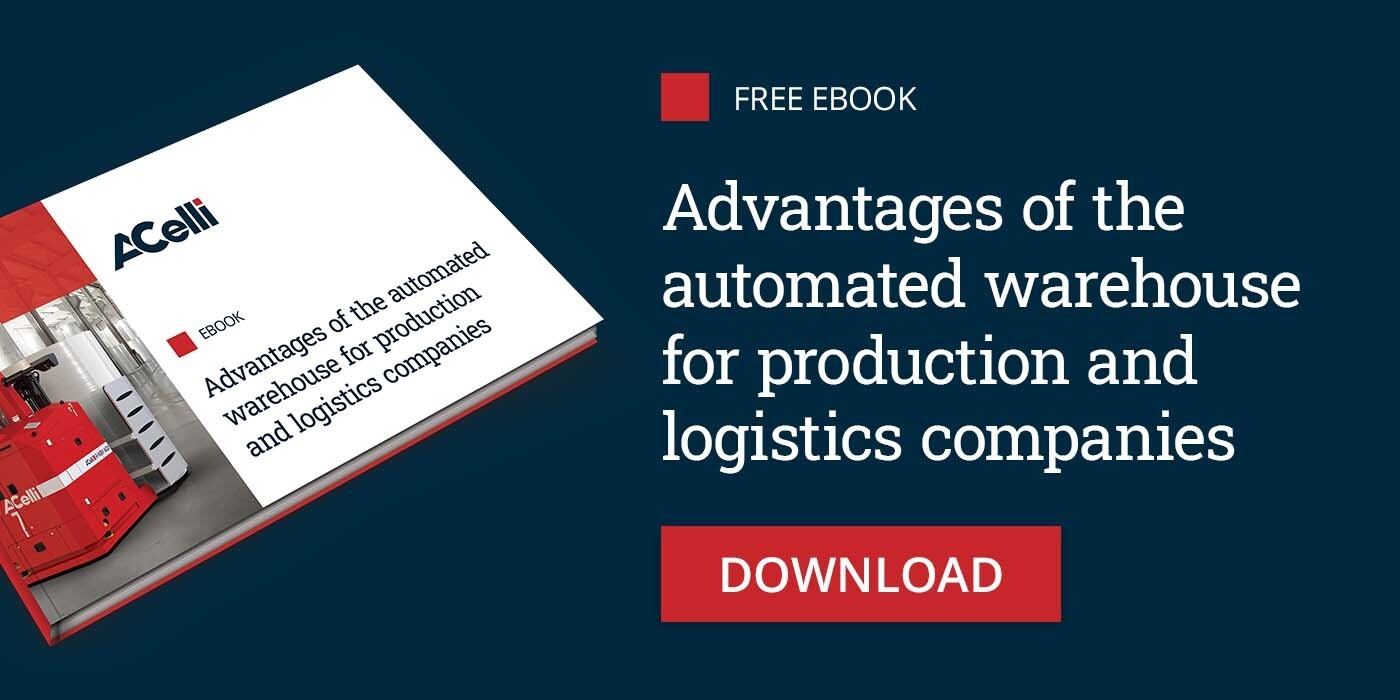If by logistics we mean the efficient movement of goods from one area to another, the term “intralogistics” expresses a similar concept but with a more specific meaning: the management and optimization of the flow of information and physical materials within a distribution center or company perimeter.
The main objective is to increase the overall productivity of the company through a combined and improved use of technology, manpower and equipment. The benefits are those that all supply chain managers pursue: inventory control and minimization, greater speed to market and cost reduction.
It is therefore clear that intralogistics represents a strategic aspect for every company. However, continuing to manage it manually within plants where the processes are now fully automated means nullifying most of the advantages obtained in the production phase.
Automation of product handling
When we talk about automated intralogistics we are not referring to a vehicle, a product or a software, but to an integrated system: a structured plant composed of several elements which, coordinating with each other, contribute to achieving the desired results.
Generally, automated intralogistics includes control software for business process automation, its interfaces, integration with the environment (doors, lights, fire protection, alarms, permissions, security...), remote technical support (in case of system block) and finally robots for the handling of products. In the case of a warehouse, the robots used are AGVs (Automated Guided Vehicles).
Relying on an automated system allows you to control in detail every movement in the warehouse, but also to eliminate the possibility of human errors and the huge costs associated with them. Furthermore, it will no longer be necessary to work on shifts: having an automated warehouse means being able to operate non-stop. We can therefore say that automated intralogistics is a valid tool for improving the productivity of a company.
The automation also allows quality controls and easy inventory verification through the physical labels applied to the goods and the virtual ones created with the warehouse management software itself. These in fact allow you to always know where certain products are, facilitating their identification and avoiding mistakes in delivery.

Hidden savings
As mentioned, the use of material handling solutions allows significant savings on manpower and related business costs. However, even greater savings derive from the elimination of so-called “intangible” costs, that is the costs related to workplace safety, loss of productivity due to inefficiencies, training, salary inflation and more.
How much do they weigh on the overall costs of a company? Each entrepreneur can give a different answer to this question, but surely in any organization they have a big impact on the year-end review.
Considering only the intangible costs listed above, it is easy to discover that automation brings savings that allow it to pay for itself in a rather short time.
If a company decides to automate the production and storage system, it will certainly be able to obtain a series of economic advantages, but not only: positive effects can also be found on the quality of the work carried out, of the products obtained (artificial intelligence allows the control in real-time) and on the quality of the storage.
Let’s analyze the main intangible costs.
Workplace safety
Automation makes it possible to entrust robotics with repetitive and heavy tasks that can lead to errors and even cause injuries. Not only that: automating the handling within the warehouse makes it possible to significantly increase safety because we use AGVs capable of recognizing people and, therefore, avoiding collisions.
Accidents during handling operations are in fact frequent and often cause serious injuries that can lead to significant costs, a prolonged downtime and a "dangerous" damage to the company's image.
Limited use of the production plant
Workers must respect working hours and have rest days. It is possible to establish shifts to increase productivity, but in any case the plant will never be used 24/7 at full capacity. Automation, on the other hand, is able to ensure the maximum plant utilization while maintaining the same quality and production level.
Productivity loss
tablish shifts to increase productivity, but in any case the plant will never be used 24/7 at full capacity. Automation, on the other hand, is able to ensure the maximum plant utilization while maintaining the same quality and production level.
training costs
Each activity, to be performed at its best, requires some training. This implies a cost to be incurred for the courses themselves and an opportunity cost due to the fact that the staff, during the courses, is obviously not at work. Furthermore, there is never any guarantee that the personnel for whom training is paid will remain at our disposal for long. Obviously this does not happen with robots, which are already set up to perform their tasks right away.
salary increases and turnover
Obviously, human personnel entail a monthly cost that tends to increase over time, while the adoption of automation, while implying a higher initial cost, does not require additional expenses, other than those relating to maintenance and updates of the machines when needed. Thanks to preventive diagnostics, however, the risk of having to stop the plant due to an unexpected failure is very low.
availability of manpower
If adequate maintenance is performed, an automated system will always work at full capacity. Companies often run into problems of lack of manpower, while automating the warehouse they will never experience a reduction in productivity, even if the plant is in operation every day without interruption.
The human factor
Often, when a company decides to automate some activities, it has to battle with the reluctance of the staff. This happens essentially for two reasons. In the first place, the fact of having to learn a new job is generally not willingly accepted (especially by those who have been in the company for the longest time). Secondly, the mistake is often made of thinking that automation lines, robots and AGVs can somehow "steal" human work.
In reality, the goal is exactly the opposite: we implement automation to relieve people of boring and repetitive (and in some cases even particularly dangerous) activities. The staff will thus be able to focus on higher value activities, starting with the management of the new machinery itself. In fact, in order to function at their best, the machines must be connected to each other and to the other sections of the plants, through a communication system that involves human operators.
The role of the entrepreneur or management is essential to ensure that automation is accepted by the staff as an improvement in the quality of work, thus obtaining the expected benefits.

